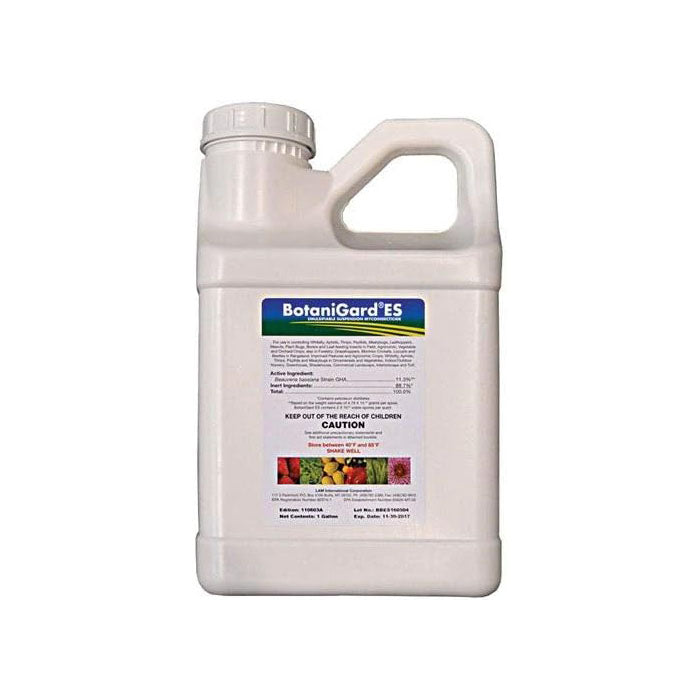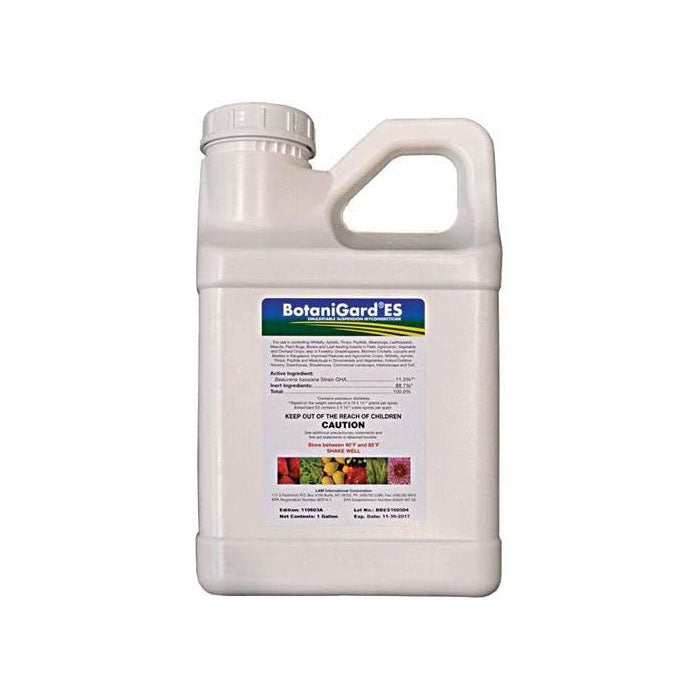BotaniGard ES, 1 GALLON (Myco Insecticide)
BotaniGard ES, 1 GALLON (Myco Insecticide)
Couldn't load pickup availability
Controls Adult & Immature stages Of Many Pests
Tough on bugs & SAFE for people, pets and plants! BotaniGard ES is a highly effective biological insecticide containing Beauveria bassiana, an entomopathogenic fungus that attacks a long-list of troublesome crop pests (not plants) like aphids, thrips, whitefly, spider mites, mealybugs, root aphids and more! See the product label below for a complete list of insects controlled.
Active Ingredient
Beauveria bassianastrain GHA
BotaniGard 22WP can be used for the following insects
- Orthoptera
- Whiteflies
- Aphids
- Thrips
- Psyllids
- Mealybugs
- Leafhoppers & planthoppers
- Stem-Boring Lepidoptera
- Leaf-Feeding Beetles
- Scarab Beetles
- Plant Bugs (Heteroptera)
- Weevils
Benefits:
- Superior formulation & highest spore concentration!
- Use in greenhouse, nursery, vegetables, landscape and interiorscape
- Unique mode of action & spores penetrate through the insect cuticle
- Effectiveness is NOT dependent on high relative humidity
- Controls ALL stages of the most troublesome crop pests & even resistant strains!
This naturally occurring mycoinsecticide works on contact and thorough coverage is required to achieve control. The applied spores attach to the insect, germinate and penetrate through the insect cuticle (skin). The fungus then grows rapidly within the insect, causing mortality in 7-10 days.
Important: Botanigard has an 18 month shelf life from the time of manufacture.
Directions for use
Shake well and mix 1-4 tsp per gallon of water (1/2 to 1 quart per 100 gallons). Thoroughly mix solution and apply to all plant surfaces (including undersides of leaves) until thoroughly wet but not to run-off. Frequently mix solution as you spray and reapply as often as necessary. Can be applied up to the day of harvest.
A weekly application program can prevent insect population explosions and provide a level of control equal to or better than many chemical pesticides. This biopesticide is safe for use with many beneficial insects. However, it is potentially pathogenic to honey bees. Avoid applying to areas where honey bees are actively foraging or around hives.
Share


